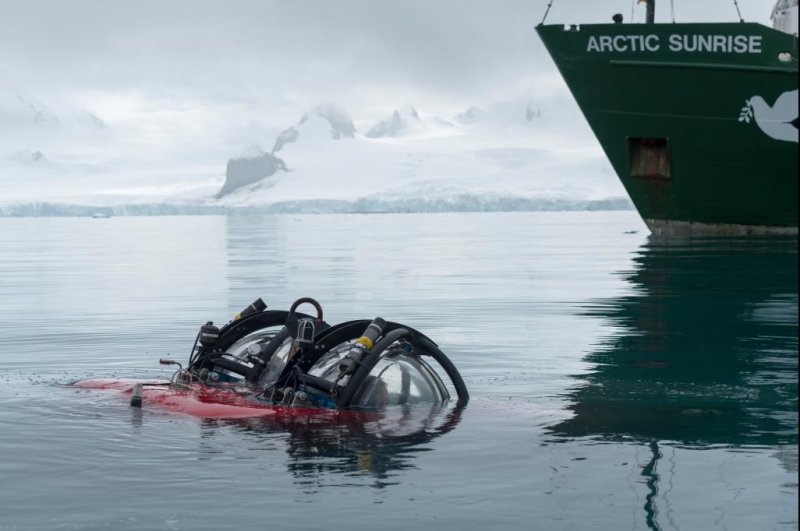1 of 2 | Greenpeace's two person submarine surfaces after a dive to the seabed near Livingston Island, Antarctica. Photo by Christian Åslund/Greenpeace
Jan. 24 (UPI) -- The environmental group Greenpeace has released a remarkable new video captured during an expedition of Antarctica.
The footage showcases a portion of the Antarctic seafloor previously unexplored by humans -- a seafloor "carpeted with life." Unfortunately, the video also features evidence of a vulnerable ecosystem.
Greenpeace's ongoing expedition is part of a campaign for the creation of a marine sanctuary in Antarctica encompassing some 700,000 square miles.
During their survey of a previously undocumented portion of the Antarctic seabed, scientists were surprised by the amount of biodiversity.
"There were a lot of species of sponges, corals, sea squirts, a lot of different kinds of sea stars and their relatives, basket stars, feather stars," John Hocevar, a marine biologist with Greenpeace, said in a news release. "It was just incredible how the whole bottom was carpeted with life. I really didn't expect it. I hope the work we're doing down here shows exactly why we need to protect this precious ecosystem."
In addition to biodiversity, scientists also witnessed evidence of ecological damage -- signs of manmade environmental impacts.
"There are clear indications of a vulnerable marine ecosystem in the initial footage gathered at the seabed," said Susanne Lockhart, an Antarctic biologist. "We'll be doing further exploration of the bottom of the sea to help determine specific areas that should be a priority for protection from commercial fishing in these pristine waters, as well as building a body of evidence to support proposals for protection in the Antarctic Ocean."
Hocever and Lockhart both visited the remote seabed in a miniature, two-person submarine. The ongoing expedition will feature several more submarine dives to study Antarctica's seabed. Scientists are also measuring plastic pollution levels and detailing ecological vulnerabilities.
Researchers hope their efforts will inspire governments across the globe to come together to establish improved protections of Antarctica's marine ecosystems.
"Over half a million people have already backed the call for an Antarctic Ocean Sanctuary -- a 1.8 million square kilometer safe haven for penguins and whales," said Frida Bengtsson, head of Greenpeace's Protect the Antarctic campaign. "The movement to create the biggest protected area on Earth is growing by the day."
The campaign will soon have a celebrity guest. David Harbour, who played Police Chief Jim Hopper on the show Stranger Things, earned an invitation to join the expedition after earning 200,000 retweets.
"We challenged. And he delivered," Greenpeace said. "David Harbour, get your thermals because we are taking you to dance with penguins and help us create the biggest protected area on Earth: an Antarctic Ocean Sanctuary."















